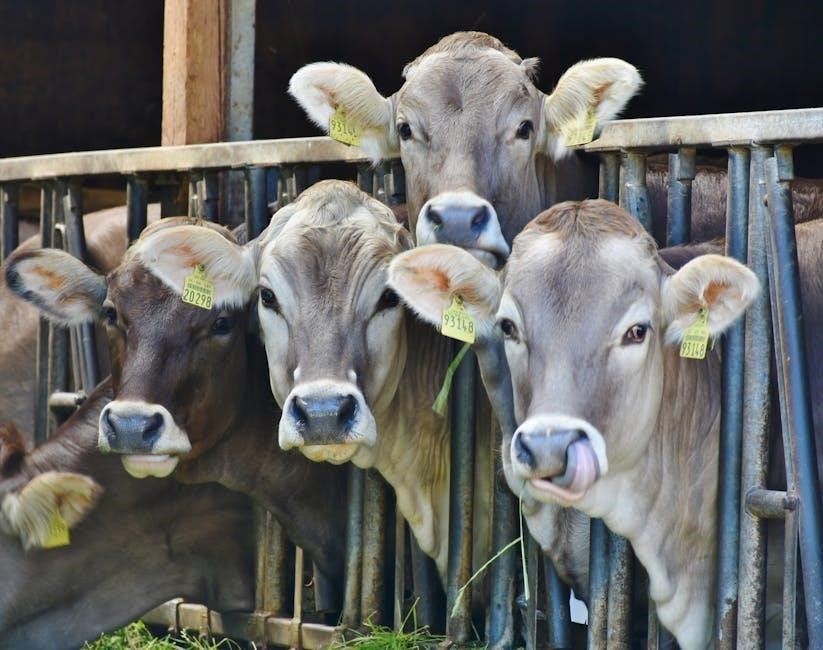Liquamycin LA-200 is a long-lasting antibiotic for cattle with 200 mg oxytetracycline per ml effective in treating diseases like pinkeye and pneumonia in cattle and swine always.
Overview of LA-200
Liquamycin LA-200 is a long-lasting, broad-spectrum antibiotic containing 200 mg oxytetracycline per ml, effective in treating a wide range of diseases in cattle and swine.
It provides therapeutic levels of oxytetracycline in the blood for 3 days, with most animals showing noticeable improvement within 24 to 48 hours.
LA-200 is approved for 96 hour milkout and can be administered by intramuscular, subcutaneous, or intravenous injection to beef cattle and dairy cattle.
The antibiotic is also effective in treating pinkeye, footrot, and pneumonia in cattle and swine, making it a versatile and reliable treatment option for farmers and veterinarians.
With its long-lasting formula and broad-spectrum efficacy, LA-200 is a popular choice for treating bacterial infections in livestock, and its ease of administration makes it a convenient option for farmers and veterinarians alike, every day.

Administration Methods
LA-200 can be administered by intramuscular or subcutaneous injection to cattle and swine easily and effectively always.
Intramuscular and Subcutaneous Injection
LA-200 can be administered by intramuscular or subcutaneous injection to cattle and swine.
The injection method is an effective way to deliver the antibiotic to the animal.
LA-200 is typically administered by a veterinarian or experienced livestock handler.
The injection site should be clean and dry to prevent infection.
Intramuscular injection involves inserting the needle into the muscle, while subcutaneous injection involves inserting the needle under the skin.
Both methods are commonly used in veterinary medicine to administer antibiotics like LA-200.
The choice of injection method may depend on the specific disease being treated and the animal’s overall health.
It is essential to follow proper injection techniques to ensure the animal’s safety and the effectiveness of the treatment.
LA-200 is a long-lasting antibiotic, and its effects can last for several days after injection.
Dosage Recommendations
LA-200 dosage recommendations vary depending on the disease being treated and animal weight always using specific guidelines.
General Dosage Guidelines
General dosage guidelines for LA-200 in cattle are typically based on the animal’s weight, with a recommended dosage of 9 milligrams per pound of body weight.
This dosage can be administered through intramuscular or subcutaneous injection, and is usually effective for a range of diseases, including pneumonia and anaplasmosis.
The dosage may vary depending on the specific disease being treated, as well as the severity of the infection.
It is essential to follow the recommended dosage guidelines to ensure the effectiveness of the treatment and to minimize the risk of adverse reactions.
LA-200 is a long-acting antibiotic, providing therapeutic levels of oxytetracycline in the blood for an extended period, usually 3 days.
This allows for a single dose to be effective in many cases, reducing the need for repeated treatments and making it a convenient option for farmers and veterinarians.
Overall, the general dosage guidelines for LA-200 in cattle provide a useful framework for treating a range of diseases, and should be followed carefully to ensure the best possible outcomes.
The information provided is based on the available data and should be used as a reference.
The dosage guidelines are crucial for the effective treatment of diseases in cattle.

Treatment of Specific Diseases
Liquamycin LA-200 treats pneumonia and anaplasmosis in cattle with oxytetracycline always effectively in animals.
Footrot and Advanced Diseases
Liquamycin LA-200 is used to treat footrot and advanced diseases in cattle, the dosage level of 5 mg per pound of body weight per day is recommended for severe cases.
The treatment should be continued for a certain period to ensure the disease is fully cured.
In the case of advanced diseases, the dosage may need to be adjusted according to the severity of the disease.
Liquamycin LA-200 has been demonstrated to be effective in treating these diseases.
The antibiotic works by stopping the growth of bacteria that cause the disease.
It is essential to follow the dosage instructions carefully to ensure the best results.
Liquamycin LA-200 is a long-lasting antibiotic, providing therapeutic levels of oxytetracycline in the blood for 3 days.
Most animals show a noticeable improvement within 24 to 48 hours of treatment.
The dosage and administration of Liquamycin LA-200 should be done under the guidance of a veterinarian.
Liquamycin LA-200 is an effective treatment for footrot and advanced diseases in cattle.

Comparison of Dosage Regimens
Single dosage is as effective as repeated treatments for cattle with Liquamycin LA-200 always providing therapeutic levels of oxytetracycline.
Single vs Repeated Treatments
Liquamycin LA-200 administered for the treatment of bacterial pneumonia or anaplasmosis at a dosage of 9 mg of oxytetracycline per lb of body weight has been demonstrated in clinical trials to be as effective as 2 or 3 repeated, daily treatments at 3-5 mg/lb of body weight. This suggests that a single dosage of LA-200 can be just as effective as multiple treatments, which can be beneficial for cattle farmers. The use of a single dosage can also help to reduce the risk of antibiotic resistance and make treatment more convenient. Overall, the effectiveness of single vs repeated treatments with LA-200 is an important consideration for cattle farmers and veterinarians. The dosage and administration method of LA-200 can have a significant impact on the effectiveness of treatment.

Important Considerations
Approved for 96 hour milkout and provides therapeutic levels of oxytetracycline in the blood for 3 days always for cattle and swine treatment purposes only.
Milkout and Withdrawal Times
Liquamycin LA-200 is approved for 96 hour milkout, which is a crucial consideration for dairy cattle farmers to ensure safety and quality of milk products.
The withdrawal time for LA-200 in cattle is an important factor to consider when treating animals with this antibiotic.
According to the label directions, the milkout period is 96 hours, during which time the milk from treated animals should not be used for human consumption.
This allows sufficient time for the oxytetracycline to be eliminated from the milk, minimizing the risk of antibiotic residues in the dairy products.
Farmers should carefully follow the label instructions and adhere to the recommended milkout and withdrawal times to ensure compliance with regulatory requirements and maintain consumer confidence in their products.
By doing so, they can help prevent the presence of antibiotic residues in milk and protect public health.
This information is essential for cattle farmers and veterinarians to make informed decisions about the use of LA-200 in their animals.
Liquamycin LA-200 is effective in treating cattle diseases with proper dosage and administration always following label directions carefully.
Liquamycin LA-200 is a long-lasting antibiotic for cattle, effective in treating various diseases. The dosage is typically administered by intramuscular or subcutaneous injection. It is essential to follow the label directions carefully to ensure proper administration. Liquamycin LA-200 provides therapeutic levels of oxytetracycline in the blood for 3 days. Most animals show a noticeable improvement within 24 to 48 hours. The product is approved for 96 hour milkout, making it a convenient option for dairy cattle. Overall, Liquamycin LA-200 is a reliable and effective treatment for a range of cattle diseases, including pinkeye, footrot, and pneumonia. Its long-lasting formula and ease of administration make it a popular choice among cattle farmers and veterinarians. By following the recommended dosage and administration guidelines, cattle owners can help ensure the health and well-being of their animals.
